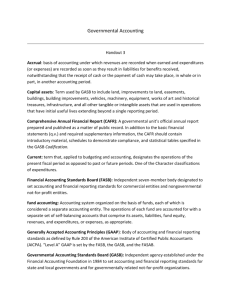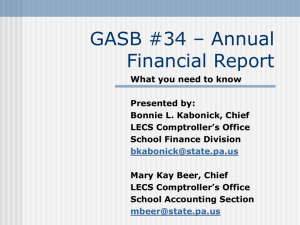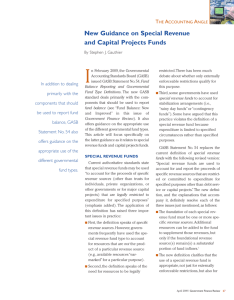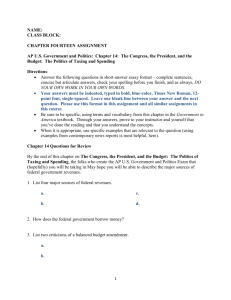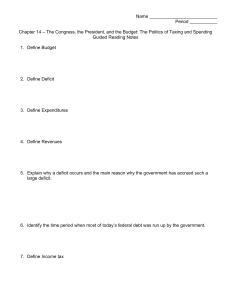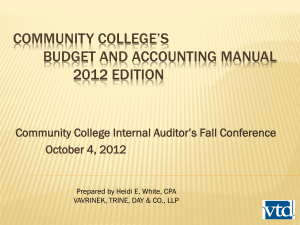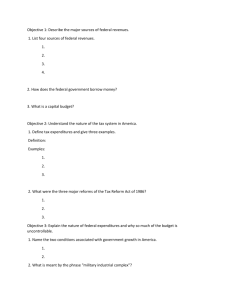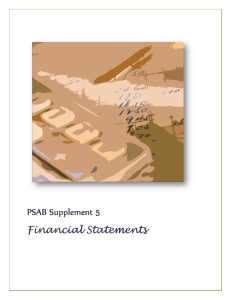I. a) Outline revenue recognition criteria under modified accrual
advertisement
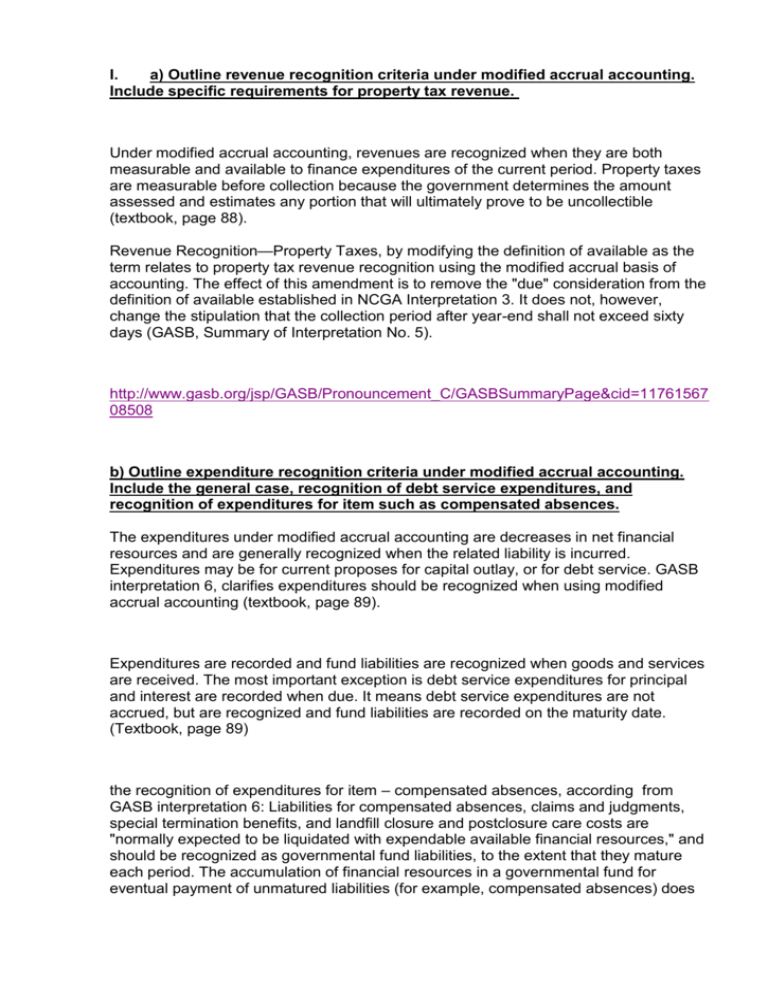
I. a) Outline revenue recognition criteria under modified accrual accounting. Include specific requirements for property tax revenue. Under modified accrual accounting, revenues are recognized when they are both measurable and available to finance expenditures of the current period. Property taxes are measurable before collection because the government determines the amount assessed and estimates any portion that will ultimately prove to be uncollectible (textbook, page 88). Revenue Recognition—Property Taxes, by modifying the definition of available as the term relates to property tax revenue recognition using the modified accrual basis of accounting. The effect of this amendment is to remove the "due" consideration from the definition of available established in NCGA Interpretation 3. It does not, however, change the stipulation that the collection period after year-end shall not exceed sixty days (GASB, Summary of Interpretation No. 5). http://www.gasb.org/jsp/GASB/Pronouncement_C/GASBSummaryPage&cid=11761567 08508 b) Outline expenditure recognition criteria under modified accrual accounting. Include the general case, recognition of debt service expenditures, and recognition of expenditures for item such as compensated absences. The expenditures under modified accrual accounting are decreases in net financial resources and are generally recognized when the related liability is incurred. Expenditures may be for current proposes for capital outlay, or for debt service. GASB interpretation 6, clarifies expenditures should be recognized when using modified accrual accounting (textbook, page 89). Expenditures are recorded and fund liabilities are recognized when goods and services are received. The most important exception is debt service expenditures for principal and interest are recorded when due. It means debt service expenditures are not accrued, but are recognized and fund liabilities are recorded on the maturity date. (Textbook, page 89) the recognition of expenditures for item – compensated absences, according from GASB interpretation 6: Liabilities for compensated absences, claims and judgments, special termination benefits, and landfill closure and postclosure care costs are "normally expected to be liquidated with expendable available financial resources," and should be recognized as governmental fund liabilities, to the extent that they mature each period. The accumulation of financial resources in a governmental fund for eventual payment of unmatured liabilities (for example, compensated absences) does not constitute an outflow of current financial resources or result in the recognition of an additional governmental fund liability or expenditure. http://www.gasb.org/jsp/GASB/Pronouncement_C/GASBSummaryPage&cid=11761567 08391 Moreover about compensated absences according GASB, Statement No. 11 Measurement Focus and Basis of Accounting—Governmental Fund Operating Statements Compensated absences for other than sick leave should be recognized as expenditures when the benefits are earned by the employees. An expenditure accrual for earned sick leave should be made only if a vesting benefit is expected to result in a termination payment; otherwise, expenditures for sick leave benefits should be recognized as expenditures when the leave is taken. http://www.gasb.org/jsp/GASB/Pronouncement_C/GASBSummaryPage&cid=1176156676266 II. Distinguish between the (1) GAAP basis and (2) budgetary basis of reporting for the General Fund. Compare the both report in general fund. The GAAP is presented in columnar form with other government type funds in statement of revenues, expenditures, and changes in fund balances for governmental funds. The Budgetary basis appears in the repaired supplementary information. Note the required reconciliation between the budgetary basis and GAAP basis reporting of expenditure in the bottom of the budgetary comparison that has additional difference or explanation. (Textbook, page 106) Reference Copley, P. (2011). Essentials of Accounting for Governmental and Not-for-Profit Organizations. (10th ed.). Boston: McGraw-Hill Irwin http://www.gasb.org
